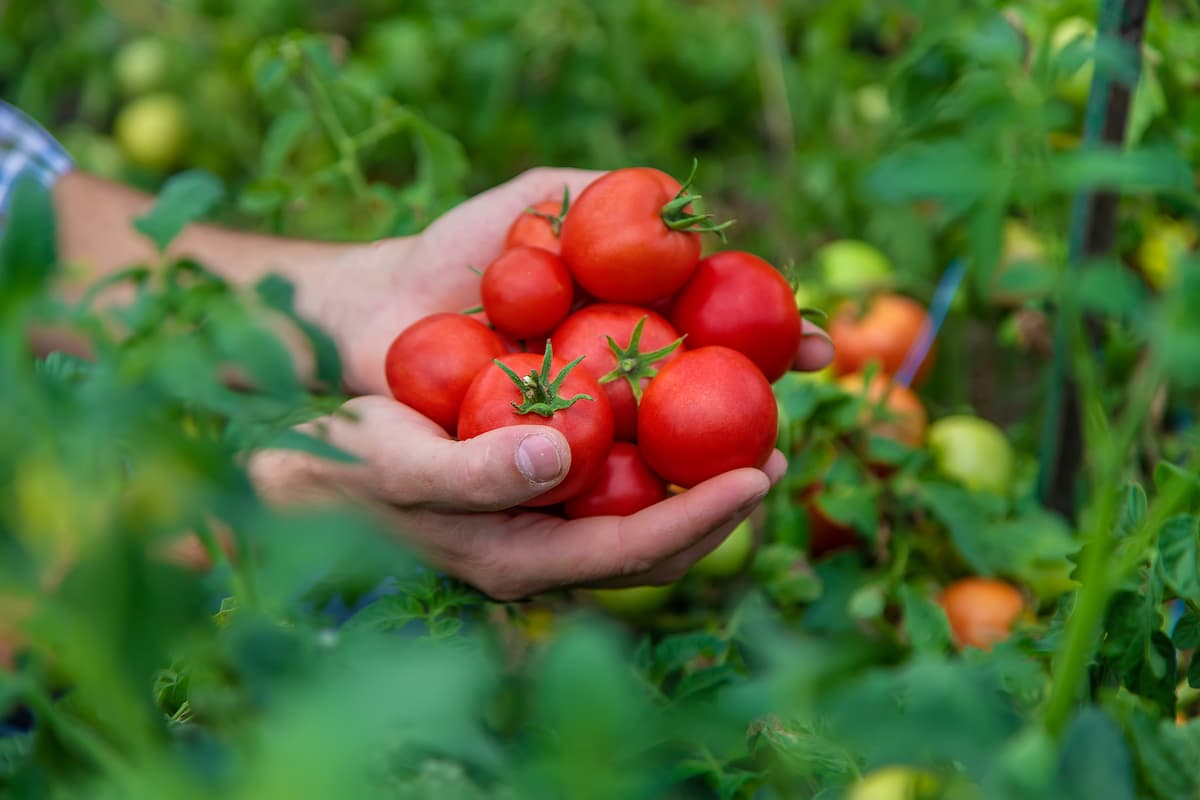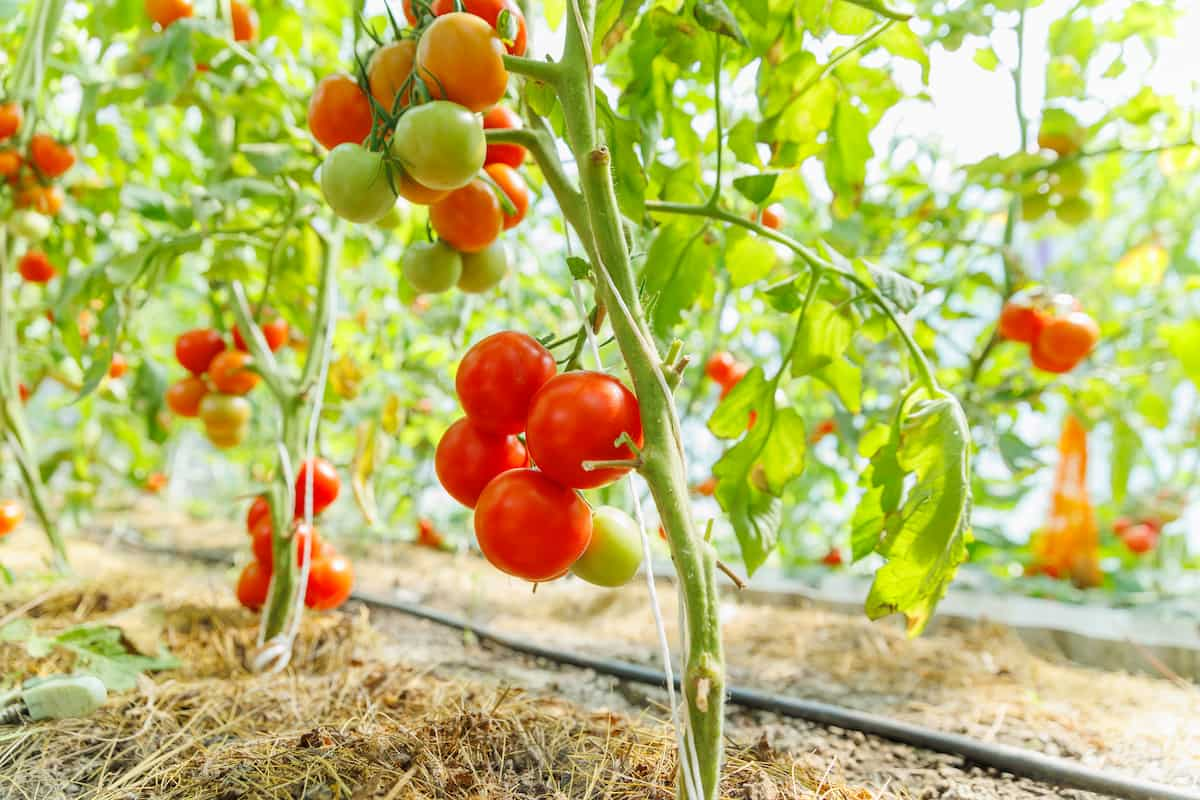The fungus Septoria lycopersici causes a Septoria leaf spot, affecting tomato plants’ foliage. The fungus infects the leaves through natural openings or wounds. It causes small, circular, brown spots with gray centers to form on the foliage. The spots may enlarge and eventually cause the entire leaf to wilt and die.

The disease can spread rapidly from plant to plant, significantly reducing yield and fruit quality. It is important to monitor your tomato plants regularly and take prompt action if you notice any disease symptoms. Early detection and treatment can help reduce the disease’s spread and prevent severe crop losses.
Septoria Leaf Spot Management in Tomato
The Causal Organism of Septoria Leaf Spot
Septoria lycopersici is the pathogen responsible for causing the Septoria leaf spot in tomato plants. The fungus thrives in moist conditions, so periods of high rainfall or overhead irrigation can increase the risk of infection. The fungus can also persist in plant debris and soil, making it important to practice good crop rotation and to remove and dispose of infected plant material to reduce the risk of future infections.
The Disease Cycle of Septoria Leaf Spot
- The disease cycle of the Septoria leaf spot starts when fungal fragments (conidia) are deposited onto and penetrate the leaves of tomato plants.
- The fungus can rapidly develop and spread when favorable environmental conditions, with abundant moisture and moderate temperatures.
- The pathogen can be dispersed through various means, including equipment, plant stakes, contaminated seed, insects, and workers. Rain splash and overhead irrigation can also contribute to the spread of the disease by spreading fungal fragments from one plant to another.
- The fungus can survive between tomato crops in infected plant debris, on solanaceous weeds, or on contaminated seeds, making it important to practice good crop rotation and to remove and dispose of infected plant material to reduce the risk of future infections.
Causes/conditions Favorable for Septoria Leaf Spot Disease Spread in the Field
- High humidity and warm temperatures can create ideal conditions for developing and spreading Septoria leaf spots caused by the fungus Septoria lycopersici.
- The fungus can overwinter on infected plant debris or nearby weed hosts. It can be spread by rain splash, wind, or contact with infected foliage.
- Overhead irrigation can also contribute to the spread of the disease by keeping the foliage moist, which provides a suitable environment for the fungus to thrive.
- By reducing the amount of overhead irrigation and removing and destroying infected plant debris, you can help to reduce the risk of the Septoria leaf spot and minimize its impact on your tomato crops.
Symptoms of Septoria Leaf Spot Disease
- The symptoms typically start as small brown spots, dark margins, and tan to gray centers on the lower leaves, which can quickly spread and cause defoliation of the plant.
- These spots are often dotted with black fungal fruiting bodies (pycnidia) and may be surrounded by a slight yellow halo. Stem, petiole, and calyx lesions are generally smaller and may or may not contain pycnidia.
- If the disease is severe, it can cause the leaves to turn yellow, brown, and wither, reducing yield and fruit quality.
- Fruit can also become sunscalded if the disease severely damages the foliage. To minimize the impact of the Septoria leaf spot, it is important to follow good cultural practices and to use fungicides when necessary.
In case you missed it: Thrips Management in Tomato: Symptoms, Treatment, Chemical, Biological, Natural, and Organic Control

Septoria Leaf Spot Disease Management in Tomato by Cultural Method
- Plant high-quality seed that is free from the Septoria leaf spot pathogen.
- Practice a 2-year or longer crop rotation between tomato crops.
- Eliminate weeds in and around tomato fields and rotation crops that can serve as alternate hosts for the Septoria leaf spot pathogen.
- Deeply bury crop debris soon after harvest to reduce pathogen overwintering and survival.
- Promote rapid leaf drying by avoiding dense plantings, staking plants, and orienting rows parallel to the prevailing wind direction.
- Avoid overhead irrigation if possible and time irrigations to end before dusk to reduce prolonged periods of leaf wetness.
- Reduce contact between foliage and soil.
- Do not work in tomato fields when foliage is wet to reduce the plant-to-plant spread of the fungus.
Septoria Leaf Spot Disease Management in Tomato by Organic/Natural Method
There are limited products for organic growers to control Septoria leaf spot-on tomatoes. Organic fungicides may have limited efficacy, so it is important to implement cultural practices before considering them. The following are some examples of active ingredients that are certified for organic use:
- Fixed Copper (various products)
- Potassium Bicarbonate (Example product: Carb-O-Nator)
Septoria Leaf Spot Disease Management in Tomato by Chemical Method
- Chemical control of the Septoria leaf spot on tomato plants can be accomplished through fungicidal sprays.
- If cultural control methods are not enough to prevent the spread of the disease, applying fungicides at 7 to 10-day intervals throughout the growing season can help protect new leaves from becoming infected.
- Some common fungicides that control the Septoria leaf spot include chlorothalonil, maneb, mancozeb, and copper-based fungicides like Bordeaux mixture, copper hydroxide, copper sulfate, or copper oxychloride sulfate. However, it is important to note that fungicides will not cure infected leaves.
- When using fungicides, following harvest restrictions listed on the pesticide label is important.
In case you missed it: Spider Mite Management in Tomato: Symptoms, Treatment, Chemical, Biological, Natural, and Organic Control

Preventive Measures for Control of Septoria Leaf Spot Disease
- Remove diseased leaves: If caught early, lower infected leaves can be removed and burned or destroyed. However, removing leaves above where the fruit has formed will weaken the plant and expose it to sunscald. At the end of the season, collect all foliage from infected plants and dispose of or bury them. Do not compost diseased plants.
- Improve air circulation: If the plants can still be handled without breaking them, stake or cage them to raise them off the ground and promote faster drying of the foliage.
- Apply mulch: Mulching around the base of the plants will reduce splashing soil, which may contain fungal fragments associated with debris. Apply mulch after the soil has warmed.
Conclusion
Implementing cultural practices such as planting high-quality seeds, rotating crops, burying crop debris, avoiding dense plantings, and reducing foliage contact with soil can help prevent the spread of the Septoria leaf spot. If these measures are not enough, fungicidal sprays may be used to protect new leaves. Fungicides such as chlorothalonil, maneb, macozeb, or a copper-based fungicide, such as Bordeaux mixture, copper hydroxide, copper sulfate, or copper oxychloride sulfate, can be applied at 7 to 10-day intervals throughout the season.
- Deworming Schedule for Dogs/Puppies: A Beginners Guide
- How to Prevent and Control Parasites in Goats
- Beneficial Insects in Pest Management
- Natural Solutions for Pest Control in Flower Gardens
- Types of Fungicides Used in Agriculture
- Common Issues in the Fruit Development Stage of Pomegranate Farming
- Fruit Development Issues in Papaya: Easy Solutions and Treatment
- Soil-Borne Diseases and How to Protect Your Plants
- Practices to Prevent Disease Spread in the Garden